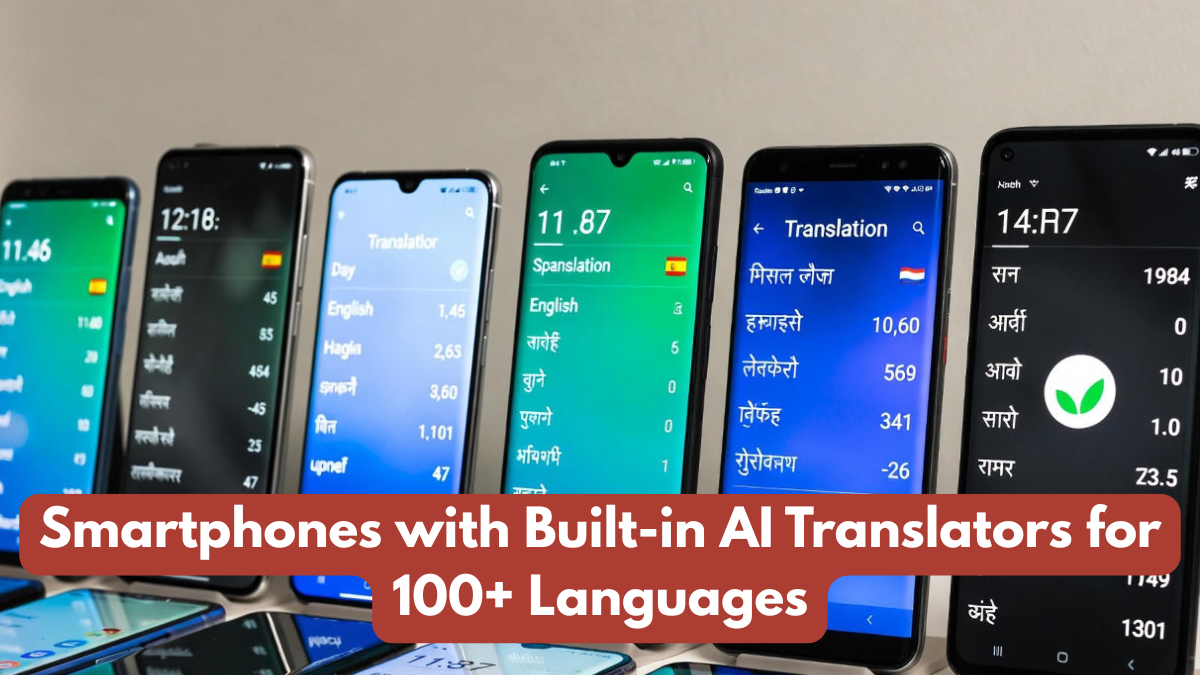The arrival of AI translator phones marks a powerful shift in global communication, breaking down language barriers that have existed for centuries. Whether traveling, studying, or doing international business, people often struggle to communicate across different languages. But with advancements in language translation tech, smartphones are transforming into real-time interpreters capable of understanding and translating over a hundred languages instantly. This new era of smart communication is reshaping how humans interact, enabling seamless conversations between people from different linguistic backgrounds.

How AI Translator Phones Work
AI translator phones function through a combination of machine learning algorithms, neural networks, voice recognition systems, and contextual understanding tools. When a user speaks into the device, the phone identifies the language, analyzes sentence structure, and translates it into another language within seconds. Thanks to advanced language translation tech, these devices don’t just translate words—they understand tone, context, slang, idioms, and cultural expressions.
Most AI translator phones include features such as offline translation, real-time voice interpretation, camera-based text translation, and AI-powered conversation modes. With the help of language translation tech, these phones continuously learn from millions of speech samples to improve accuracy and naturalness. As a result, translations sound more like human conversation rather than robotic, literal interpretations.
Benefits of AI Translator Phones
The widespread adoption of AI translator phones provides numerous benefits for travelers, students, businesses, and multicultural communities. Because of the sophistication of modern language translation tech, communication becomes instant, clear, and effortless.
Key benefits include:
- Real-time voice-to-voice translation
- Accurate text and image translation via camera
- Offline translation modes for remote areas
- Support for 100+ global languages
- Enhanced cultural understanding
- Faster communication for business and travel
- Continuous improvements through AI learning
With these capabilities, AI translator phones make global interactions smoother and help users overcome language challenges with ease.
Table: Traditional Translation Tools vs AI Translator Phones
| Feature | Traditional Translation Apps | AI Translator Phones |
|---|---|---|
| Translation Speed | Moderate | Instant via language translation tech |
| Accuracy | Varies | Highly accurate and contextual |
| Voice Recognition | Basic | Advanced for many accents |
| Offline Support | Limited | Strong offline translation |
| Supported Languages | Moderate | 100+ languages supported |
| Convenience | Requires app | Built-in AI translator phones integration |
This comparison highlights how AI translator phones, powered by advanced language translation tech, significantly outperform traditional translation tools.
How AI Translator Phones Are Transforming Global Communication
The impact of AI translator phones extends far beyond travel convenience. They are becoming essential tools for education, healthcare, customer support, and international collaboration. In schools, language translation tech helps students learn foreign languages more effectively and communicate with peers worldwide. In hospitals, staff can quickly speak to patients who don’t share the same language.
Businesses also benefit tremendously. Global companies rely on AI translator phones for meetings, negotiations, and customer service, eliminating misunderstandings and reducing communication barriers. Immigrants and refugees can use language translation tech to adapt faster, access essential services, and feel more connected to their communities.
Future Possibilities of Language Translation Tech
The future of AI translator phones is incredibly promising. Research teams are developing neural translation systems that mimic human linguistics even more closely, enabling phones to understand emotions, sarcasm, humor, and regional dialects. Soon, language translation tech may allow users to have fluid conversations with no noticeable delay between languages.
Future innovations may include:
- Real-time group translations for meetings
- Emotion-aware translation systems
- AR smart glasses with built-in translation overlays
- Translation for endangered or less-documented languages
- Brain-to-text multilingual translation
- Hyper-personalized learning tools for foreign language education
With continuous advancements in AI, AI translator phones will soon exceed human-level translation in many areas.
Conclusion
The rise of AI translator phones has revolutionized global communication, making multilingual interactions easier, faster, and more accurate than ever. By integrating powerful language translation tech, modern smartphones can translate speech, text, and images in real time, enabling seamless conversations between people who speak different languages. As technology continues to improve, these phones will empower users worldwide, fostering greater understanding, cultural exchange, and global connectivity. The future of communication is intelligent, inclusive, and truly borderless.
FAQs
How do AI translator phones translate so quickly?
They use advanced neural networks and language translation tech to process speech and convert it into other languages instantly.
Can AI translator phones work offline?
Yes, many AI translator phones offer offline translation modes, making them useful even without internet access.
Are AI translator phones accurate?
Accuracy is high thanks to modern language translation tech, which understands context, slang, and accents.
Do these phones support many languages?
Most AI translator phones support more than 100 languages for both text and voice translation.
Will AI translator phones replace human translators?
While AI translator phones are powerful, human translators remain essential for complex, emotional, or culturally sensitive communication.
Click here to know more.